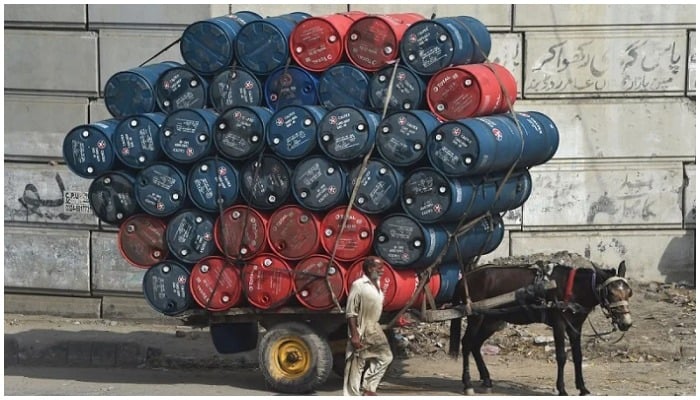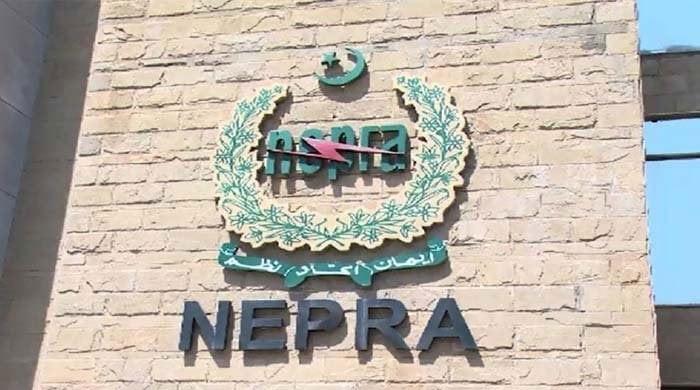Petroleum bill swells by double in nine months
Soaring international prices and a steadily surging consumer demand doubles Pakistan's petroleum import bill to $15b from $7.5b
April 24, 2022

- Soaring international prices double country's petroleum import bill to $15bn from $7.5bn.
- Government's preference to keep prices at existing levels causes losses on both internal and external accounts.
- Current account deficit touches over $1 billion mark in March 2022, clearly indicating it was an unsustainable level.
ISLAMABAD: Pakistan’s petroleum import bill for nine months of the current fiscal year doubled to $15 billion from $7.5 billion in the same period during the last fiscal year, mainly because of soaring international prices and a steadily surging consumer demand, The News reported Sunday, citing data.
The price of petroleum products for Pakistan swelled twice the amount in dollar terms, but the former PTI-led government and the incumbent PML-N government still preferred to keep prices at existing levels, which caused losses on both internal and external accounts.
Such a grave situation requires the conservation of petroleum products in order to curtail the import bill, but the ruling elites and policymakers stay unaffected, the publication reported.
Despite being fully aware that the country is sliding towards bankruptcy and default, they prefer to gain political mileage at the cost of economy, the report stated.
It was unwise of the PTI-led government to freeze fuel and power prices till June 2022 at the cost of Rs400 billion as subsidy.
However, the new PM Shehbaz Sharif government also preferred to keep petroleum prices unchanged in an attempt to take populist measures to appease voters.
The current account deficit touched over $1 billion mark in March 2022 clearly indicating it was a totally unsustainable level.
The current account deficit reached $13.2 billion for the first nine months (July-March) period of the current fiscal year.
Pakistan’s renowned economist Dr Hafiz A Pasha sees the current account deficit around $19 to $20 billion for this fiscal year.
However, the official sources said the government procured four LNG containers at a rate of $27 per mmbtu so it would have total cost of approximately $350 million. This needs detailed analysis how much it is going to cost per unit electricity when the LNG is purchased at highest rates.
Dr Khaqan Najeeb former adviser, Ministry of Finance, while talking to The News on Saturday, said the recent two economic growth episodes in Pakistan in 2018 and 2022 clearly showed a current account deficit rising to unsustainable levels was a binding constraint on Pakistan’s growth.
“This highlights the need for a new growth framework based on productivity & disincentivising real estate investments,” Dr Najeeb said.
“The real hard work is to upgrade the productivity of businesses as well as their innovative capacity to create export competitiveness.”
He said these were the changes needed to be integrated with the world and achieve long-term external account stability. Pakistan’s exports as a share of GDP fell from 16% in the late 1990s to an untenable level below 10% currently.
While explaining the rising current account deficit, Dr Najeeb said in the first nine months of FY22, imports of petroleum products increased 20% in volume, 92% in prices and 111% in value.
“The increased dependency on imported energy and rise in global commodity prices have increased external account difficulties. Devaluation of the rupee and increasing L/C margin can help to a certain extent in managing CAD.”
However, price rationalisation and conservation of energy had now become essential to tame the pressure of oil imports in the country, he said adding that the government also needed to curtail the fiscal deficit due to its correlation with current account deficit.
“Current account deficit remains a key cause of macro instability for a country like Pakistan with scarce foreign exchange.”
He said a current account deficit of $1.028 billion for March was still high but less than the first eight months’ average of $1.5 billion.
“Current account deficit has grown way beyond initial forecasts of 2.4%. It is needless to say that this decicit at around 5% of GDP estimated for FY22 is not sustainable,” Dr Najeeb concluded.











